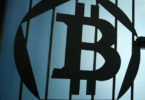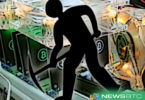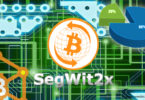Probably all of you have heard by now of blockchain and its disruptive force on banking, payments, and other financial services. Designed to run electronic currency, many people believe this technology can not only revolutionize banking, payments, and related activities, but also government, insurance, supply chain management, and healthcare, to name just a few use cases. The World Economic Forum identified the blockchain technology as one of six computing “mega-trends” that will shape society in the next 10 years, also estimating that 10 percent of the global GDP could be stored in blockchains by 2027.
What blockchain is and how it works
Let us first take a closer look at what blockchain is all about. Blockchain is the technology underlying the virtual currency, Bitcoin. While it was not initially designed to take on the complexities and challenges of the enterprise, it has now found its way to the business world, offering companies the opportunity to make and verify transactions on a network immediately without a central authority and with a non-modifiable security.
A blockchain is a data structure that enables the creation of a decentralized digital ledger of transactions. A network of computers can access this ledger and is responsible for validating each transaction by consensus.
Once a block of data is recorded on the blockchain ledger, it becomes harder and harder to change the longer the block is part of the chain. Any addition to it needs to be evaluated, validated, and verified by algorithms.
Cryptographic mechanisms ensure security and authentication, removing the need for intermediaries and preventing duplicated transactions and manipulation. Each participant on the network can work on the ledger in a secure way without being reliant on a central authority, such as a clearing house or stock exchange.
Once a transaction is certified as genuine and complete, it cannot be modified, recalled, or rejected. In addition, the transaction is fully visible to all participants in the network and the actual settlement can take place within seconds, not days. Since distributed ledgers can act as a replacement of some backend functionality, blockchain can also improve business processes.
Making the business case
Innovation, emerging trends, and technologies are at the heart of everything SAP does. Accordingly, blockchain, with its open, global infrastructure upon which other technologies and applications can be built, has been on our radar for some time now. As part of our activities to understand and assess emerging trends and technologies, we’re taking a closer look at the blockchain ecosystem and the blockchain technology. We are working with various blockchain implementations and flavors, including Ethereum, MultiChain, and the Bitcoin blockchain.
Currently, we see a lot of technical talk about blockchain, but fewer conversations about concrete business benefits. For mainstream adoption, it is crucial to change this and communicate and ultimately prove the value add of blockchain. Blockchain’s influence on banking and financial services is obvious and very visible in the market already. The financial services industry has been the fastest to adopt the technology, particularly as demand for real-time transactions increases across consumers and businesses. An additional driver here is the thread from FinTechs and other startups in this space that challenge traditional financial services business processes and models.
To make the topic more tangible, we collaborated with ATB Financial, the largest Alberta-based financial institution, financial technology start-up Ripple, and ReiseBank AG in Germany to send the first real international blockchain payment from Canada to Germany. The result? ATB Financial just recently transferred CA$1,000 to ReiseBank using a network built on SAP technology and financial technology start-up Ripple’s network of enterprise blockchain solutions. The payment, which would typically have taken between two to six business days to process, was completed in around 20 seconds.
While still in the early stages of research, SAP is looking at how blockchain might be used beyond the world of financial services. Blockchain can support the trading of digital goods. We have a number digital assets within our own solutions, and we believe they can benefit from features like faster processes, reduced process steps, and greater transaction consistency.
For example, we are looking at blockchain in areas such as healthcare. It could serve as the underlying technology of an application that allows patients to share electronic medical records with their doctors or with pharmaceutical companies for research purposes. Another possibility would be the design of a system for farmers’ weather insurance that could access rainfall data from field sensors and then automatically advise insurers if a drought is pending that would result in a payout. We are also evaluating cases in the area of risk-based transportation insurance.
These are only some examples of our activities to evaluate the implications of blockchain for industries beyond financial services. Reducing the cost and complexity of operations and processes will continue to be a critical focus for companies, and blockchain shows a lot of promise towards reaching this objective. It remains to be seen if solutions based on this technology will truly act as business disruptors and how well blockchain will integrate into existing systems and processes. Done right, we believe that, like other types of peer-to-peer interactions, blockchain definitely has the potential to disrupt entire industries.







